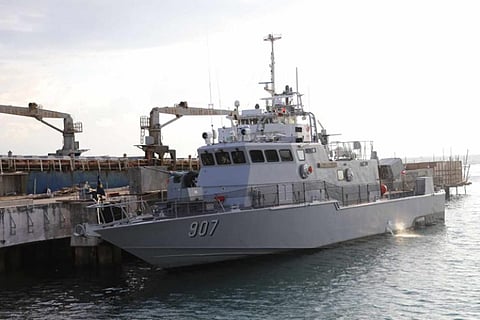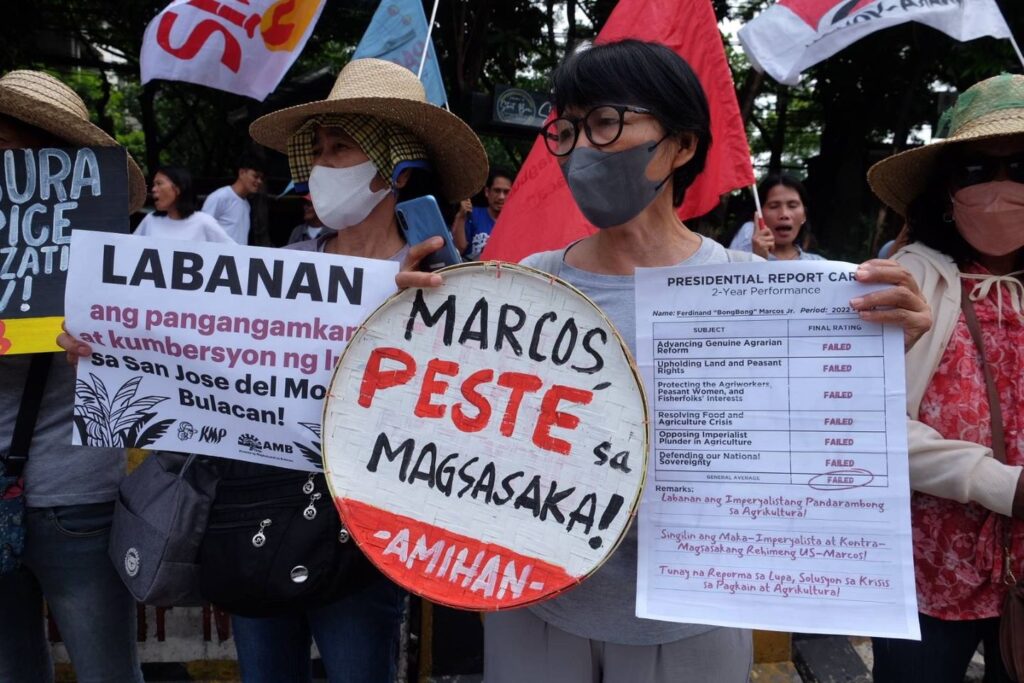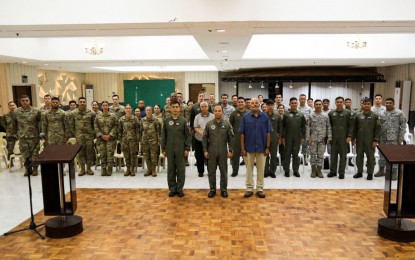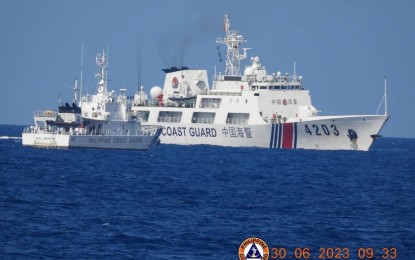Posted to The Diplomat (Jun 19, 2024): China and the Philippines Inch Closer to Conflict in the South China Sea (By Sebastian Strangio)
After eight Philippine marines were injured in a melee with Chinese forces this week, some are questioning the response of Manila’s foreign allies.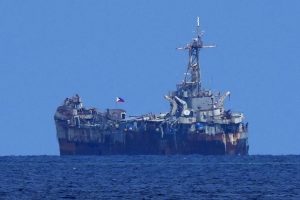
The dilapidated but still active Philippine Navy ship BRP Sierra Madre sits at the Second Thomas Shoal, locally known as Ayungin Shoal, at the disputed South China Sea on Aug. 22, 2023.Credit: AP Photo/Aaron Favila, File
Foreign governments have again condemned China for its “reckless” actions in the South China Sea, following a melee that injured eight Philippine naval personnel, one of them severely.
The incident occurred on Monday, when Chinese vessels successfully blocked a Philippine resupply mission to the Second Thomas Shoal in the Spratly Islands. During the operation, a China Coast Guard (CCG) vessel collided with a Philippine supply ship and Chinese forces boarded several small Philippine boats.
The incident was first reported by the CCG, which, perhaps seeking to get out ahead of the international response, said on Monday that a Philippine supply ship had entered waters near the Second Thomas Shoal in the Spratly Islands. In a statement on the social media platform WeChat, the CCG said the Philippine vessel “ignored China’s repeated solemn warnings … and dangerously approached a Chinese vessel in normal navigation in an unprofessional manner, resulting in a collision.”
In response, the Philippine military described the CCG report as “deceptive and misleading,” with Secretary of Defense Gilberto Teodoro Jr. pledging that his country’s armed forces would resist “China’s dangerous and reckless behavior.” The National Task Force for the West Philippine Sea accused China of “engaging in dangerous maneuvers, including ramming and towing,” actions that it described as “illegal, aggressive, and reckless.”
As with previous incidents, Manila’s foreign partners have issued statements condemning the incident. The U.S. State Department stated that Chinese vessels’ “dangerous and deliberate use of water cannons, ramming, blocking maneuvers, and towing damaged Philippine vessels” reflected a “consistent disregard for the safety of Filipinos and for international law in the South China Sea.” Canada’s government denounced the CCG’s “dangerous and destabilizing actions,” while Australia expressed its “grave concern.” The South Korean and British ambassadors to the Philippines also both condemned the Chinese vessels’ “dangerous actions.”
Since then, Filipino news reports have offered additional details that have shed light on the seriousness of the confrontation, and Beijing’s adoption of gradually more forceful tactics in the South China Sea.
According to the reports, six Philippine vessels took part in the attempted resupply operation, none of which was able to reach Second Thomas Shoal, where a unit of Philippine marines is stationed aboard the BRP Sierra Madre, a grounded warship. As the Palawan News reported yesterday, citing an unnamed source, Chinese forces “reportedly targeted all the mission vessels, including rigid-hulled inflatable boats (RHIBs), puncturing them and rendering them immobile.”
It reported that Chinese forces also confiscated eight weapons from Filipino troops after boarding one of the RHIBs. In the ensuing melee, one member of the Naval Special Operations Group lost one of his fingers. Another seven were injured. GMA Integrated News also quoted a source as saying that four Philippine RHIBs were “hostaged” by China but were later released following negotiations.
Over the past year, China has made repeated attempts to prevent the resupply of the Philippine forces on Second Thomas Shoal. These attempts have grown gradually more forceful, involving the ramming of Philippine Coast Guard ships and the use of high-powered water cannons against Philippine vessels.
As Radio Free Asia notes, the incident was the third this year in which Philippine personnel have been hurt while attempting to resupply troops stationed at the Second Thomas Shoal. During incidents on March 5 and 23, Philippine crew members were injured when their supply boats were hit by water cannons from CCG vessels. Last month, the CCG harassed Philippine service members being medically evacuated from the Sierra Madre and seized airdropped provisions intended for the marines stationed there.
This recent incident, the first in which Philippine and Chinese forces have come to direct physical blows, suggests that China has met the Philippines’ more robust and resistant policy on the South China Sea, which has included a “transparency initiative” aimed at publicizing China’s activities to the world, by upping the ante.
As a result, China has inched ever closer to activating the U.S.-Philippine Mutual Defense Treaty (MDT). Since 2019, U.S. officials have repeatedly assured Manila that an armed attack on any Philippines armed forces, public vessels, or aircraft in the South China Sea will oblige it to come to the Philippines’ aid under Article IV of the treaty. As Euan Graham of the Australian Strategic Policy Institute noted on X following the incident, “We are shockingly close to an incident that triggers the MDT and deterrence is not working.”
After most of these incidents, the Philippines’ foreign partners have issued statements condemning the Chinese actions and urging Beijing to adhere to the 2016 arbitral ruling that invalidated its sweeping claims to the South China Sea – a ruling that the Chinese government rejects.
The latest revelations have raised questions about whether these responses, and particularly that of the United States, the Philippines’ longtime security ally, are sufficient. As Jeffrey Ordaniel of the Pacific Forum noted in a post on X, “pressure is growing for the U.S. to actually do something beyond just ‘copy/pasting’ previous statements ‘condemning’ [China] & ‘standing with’ [the Philippines].”
However, it is less clear what the Philippines and its partners can and should do to defend against the more muscular Chinese approach, without themselves inflaming the situation further and pushing the Philippines and China toward an open conflict – one in which the U.S. would be treaty-bound to intervene.
Since late last year, the United States and other partners have conducted a number of joint maritime patrols in the South China Sea, the most recent of which was carried out by the Philippines, Canada, the U.S., and Japan on June 16-17. But Ordaniel pointed out that these have done “absolutely nothing” to deter China from its chosen course.
Don McLain Gill, a Manila-based geopolitical analyst, said that the situation was now at “a critical juncture” and that “the ball is in the court of the US-PH alliance.” Whatever Manila and Washington decide – for instance, whether to involve the U.S. and other partners like Japan in the Philippines’ resupply operations – they will have to tread with great care.
Alongside his journalistic work, Sebastian has also consulted for a wide variety of economic risk firms and non-government organizations, and is quoted frequently in the international media on political developments in Southeast Asia. Sebastian holds a B.A. and Master’s degree in international politics from The University of Melbourne. He currently lives in Adelaide.]
https://thediplomat.com/2024/06/china-and-the-philippines-inch-closer-to-conflict-in-the-south-china-sea/
















